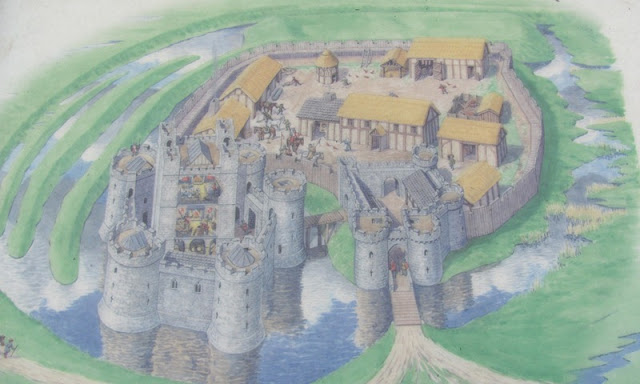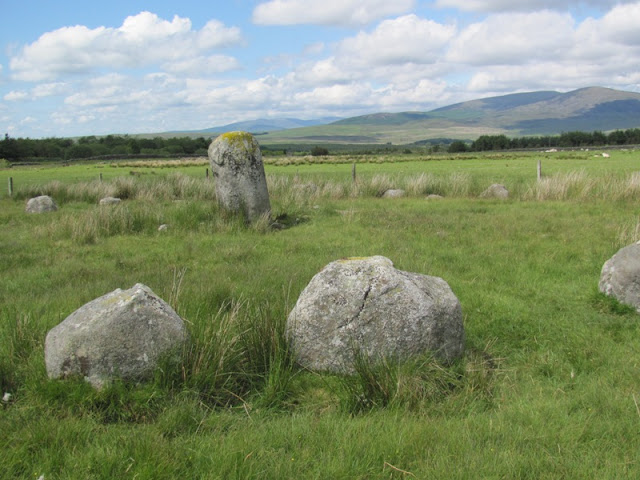For the most of my World tour I stayed with Bev and Craig in their new pub, The Wynnstay Inn in the village of Llansilin.
How delightful it was in the morning to stand at the bottom of the garden and look out on this view, first cup of tea of the day in hand with nothing to listen to but the song of the birds.
Llansilin is just a few miles drive down some very hilly and bendy, thin roads across the border from Oswestry in Shropshire. The sheep just over the fence in this picture may be in Wales but another couple of fields away and the hills in the distance are England.
Looking down the village at the Wynnstay in and the church.
On the Thursday we stopped at Whittington castle on the Shropshire side of the border with it's impressive gate towers.
Neatly tucked just behind the old facade is a more modern building.
Most of the castle isn't in as good condition.
It is on the site of an iron settlement from about 500BC whose ditches and earth works are still apparent. It is thought that around 600AD it may have been Llys Pengwern, the capital of the kingdom of Powys. In 1204 King John granted the castle to the Fitz-Warin family who built a stone castle on the site in 1221. It played a part in the wars between the Welsh and the English and in the English civil war was partially destroyed by parlimentary cannon fire in 1643 and was never repaired.
An information board had some excellent illustrations of the castle over the ages.
These ducks in the moat seem a little camera shy - perhaps living amongst the damage done by cannon they were a little confused and concerned to see me armed with a Canon.
Their friends on the ramparts seemed to be less bothered.
The doves likewise.
This is St. Silin's church in Llansilin.
Just outside this window dedicated to him, lies the Welsh poet, Huw Morys from the 17th century
This window is also dedicated to him. The four saints along the top, Jubal, Miriam, David and Cecilia, are all associated with music.
Some sparrows on Friday morning.
It took a while for the mist to clear that morning before I set out on the next stage of my journey down to Wiltshire.






















































